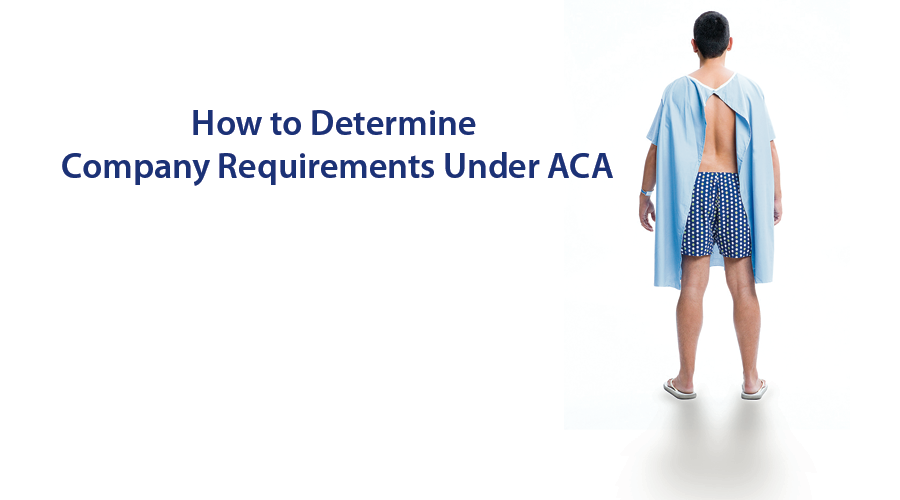All
How to Determine Company Requirements Under ACA
by Joseph A. Bucci Jr., GBAC Inc.

EDITOR’S NOTE: The following article is adapted from the Connecticut Energy Marketers Association CEMA Pipeline newsletter with the permission of the Association and GBAC.
Many employers rely on seasonal workers. As a member of CEMA it is fair to say that the winter season is such a time for our industry. How does the Affordable Care Act (“ACA”) apply to these seasonal employees that many of you have retained from year to year?
For instance, should these employees be counted in determining whether an employer is large enough to be subject to the ACA’s “play or pay” mandate? And assuming an employer is subject to this mandate, how do seasonal employees affect the penalties the employer might have to pay? Many CEMA members have raised questions or voiced concerns over how such a policy is to be managed.
Overview of ‘Play or Pay’ Rules
Starting in 2014, a “large employer” (generally defined as an employer having 50 or more full-time employees) could face a monthly penalty equal to 1/12 of $2,000 for each full-time employee (in excess of 30) if it fails to offer at least 95 percent of its full-time employees (and their children under age 26) at least a minimal level of health coverage.
Moreover, even if an employer avoids this penalty by making an appropriate offer of health coverage, it could still face a monthly penalty equal to 1/12 of $3,000 for any full-time employee who (1) is eligible for a federal tax credit to purchase coverage through a state-based “Exchange,” and (2) declines the employer’s offer of health coverage in favor of that Exchange-provided coverage. In order to avoid thispenalty, a large employer must ensure that the coverage it offers is both “affordable” by each full-time employee and sufficiently generous to meet a “minimum value” standard.
Identifying a ‘Large Employer’
In general, an employer will be a “large employer” – and therefore subject to these play or pay rules – if it averaged 50 or more full-time employees on business days during the prior calendar year. Although “full-time” is defined as working 30 or more hours per week, even hours worked by part-time employees must be counted − and then divided by 120 per month − to determine the number of “full-time equivalent” employees (“FTEs”). Those FTEs must then be added to the full-time employee count. Thus, an employer with 45 full-time employees and 10 part-time employees who averaged 15 hours per week would be treated as having 50 full-time employees – and therefore subject to the play or pay mandate.
In counting the number of employees, IRS regulations require that all related employers be treated as a single employer. These “controlled group” rules are common in the benefit-plan context and may affect many CEMA members with multiple entities under common ownership. The regulations provide no guidance, however, as to how these rules are to apply in the governmental context – other than to state that governmental employers “may rely on a reasonable, good faith interpretation” of the applicable Tax Code provisions. Prior IRS guidance suggests that governmental entities should be aggregated for this purpose if one of them has the right to appoint and remove at least 80% of the other entity’s governing board.
Seasonal Worker Exception
There is a statutory exception to the ACA’s “large employer” definition for certain employers utilizing “seasonal workers.” Under this seasonal worker exception, an employer having a large number of seasonal employees might be able to avoid the “large employer” label, and thus the play or pay rules, even if its average full-time workforce exceeded 50 over the course of the entire year.
This exception applies if, during the prior calendar year, (1) an employer’s full-time employee workforce (including FTEs) exceeded 50 employees on only 120 or fewer days, and (2) seasonal workers were the only reason the 50-employee threshold was exceeded during this period. This exception may also be applied on the basis of 4 or fewer calendar months. In either event, the days or months need not be consecutive.
Look-Back/Stability Period Safe Harbor
An employer that is unable to avoid the play or pay rules under the seasonal worker exception might still be able to treat its seasonal employees as working less than full-time. This is because the IRS has developed a detailed set of “safe-harbor” rules by which an employer may determine which seasonal (or “variable-hour”) employees should be considered full-time under the 30-hour standard.
Under this “look-back/stability period safe harbor,” an employer may track each seasonal employee’s hours during a “measurement period” of up to 12 months. If an employee averaged at least 30 hours per week during that period, he or she would be considered full-time during a subsequent “stability period” of at least six months (but generally no shorter than the measurement period). If an employee averaged fewer than 30 hours per week during the measurement period, he or she need not be considered full-time during the subsequent stability period – even if the employee actually works more than 30 hours per week during that stability period.
Accordingly, if an employer (1) reasonably classifies certain of its employees as “seasonal,” (2) tracks their hours over a 12-month measurement period, and (3) finds that they averaged fewer than 30 hours per week during that period, the employer may classify those employees as other than full-time during a subsequent 12-month stability period. That means they would not need to be offered health coverage during that stability period. Moreover, regardless of whether they must be treated as full-time during that stability period, the employer could safely exclude them from the employer’s health plan – with no risk of incurring penalties – during an initial measurement period of up to 12 months from their date of hire.
Example: CEMA member (“Employer”) offers health plan coverage only to full-time employees. Employer utilizes a 12-month initial measurement period for seasonal employees that begin on the seasonal employee’s start date, and also applies an administrative period from the end of the initial measurement period through the end of the first calendar month beginning after the end of the initial measurement period.
Employer hires seasonal employee on Dec. 15, 2014 with the anticipated winter season to run through Apr. 15, 2015. Employer’s initial measurement period runs from Dec. 15, 2014 through Dec. 14, 2015. Seasonal employee is expected to work an average of 50 hours per week from Dec. 15, 2014 through Apr. 15, 2015, but is not expected to average 30 hours per week for the 12-month initial measurement period.
Result: Employer is not required to treat seasonal employee as a full-time employee during the initial measurement period since the employee (seasonal) did not average 30 hours per week for the 12-month initial measurement period.
Transition Rule for 2014
One of several transition rules for 2014 might be of particular interest to employers with seasonal employees. This would allow an employer to determine whether it is a “large employer” for 2014 by reference to the hours worked by its employees during any consecutive, six-month period during 2013 (as opposed to all of 2013).
Thus, if seasonal employees work more than 120 days (undermining reliance on the seasonal worker exception), but are still employed only “seasonally,” an employer might be able to select a consecutive, six-month period during 2013 when its average number of full-time employees (plus FTEs) was under 50. This would at least allow the employer to defer compliance with the play or pay requirement until 2015.
What This Means for CEMA Members
Every employer, large and small, is responsible for determining the measures under the Affordable Care Act (ACA) for which they are responsible. Assessing and revising policies relevant to the management of your seasonal workforce will be required to properly adhere to the provisions under the new health care reform law. Please note that following the initial measurement period, the same policy and management of the seasonal employee(s) will have to be undertaken on an on-going basis for all employees. Additionally, despite the fact that the employer mandate was delayed for one year from Jan. 1, 2014 until Jan. 1, 2015 does not necessarily mean that all employers should wait to instill and manage their seasonal employee policies. Utilize 2014 as the year to establish a policy that adheres to the ACA and practice throughout 2014 in preparation for 2015.
The CEMA Health & Employee Benefits Marketplace has Affordable Care Act tools and safeguards to protect CEMA members and their employees from non-compliance. The policy and management of the seasonal employees, in addition to your full-time employees, will be managed within the platform and alleviate the administrative burden for all CEMA members that enroll. It is just one of the many important reasons that CEMA has taken the initiative to create its own health insurance and employee benefits marketplace.
Related Posts
 Redefining Zero
Redefining Zero
Posted on April 17, 2024
 RINs and Repeat
RINs and Repeat
Posted on March 12, 2024
 ISO NE – Not Ready for Prime Time?
ISO NE – Not Ready for Prime Time?
Posted on March 11, 2024
 U.S. DOE Releases Home Energy Rebate Guidance
U.S. DOE Releases Home Energy Rebate Guidance
Posted on September 14, 2023
Enter your email to receive important news and article updates.
